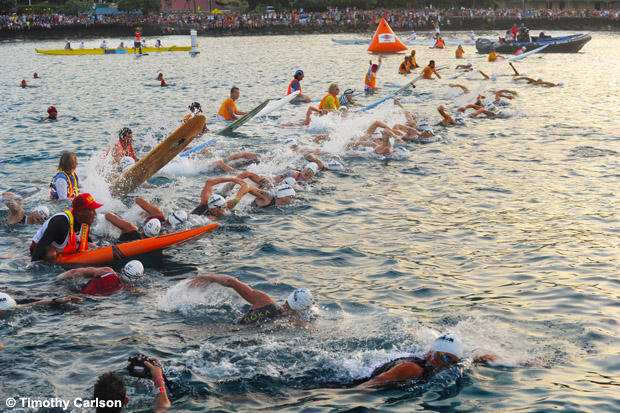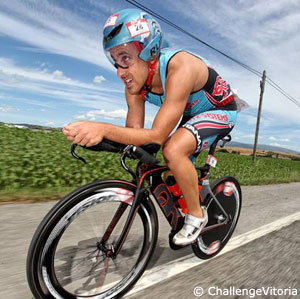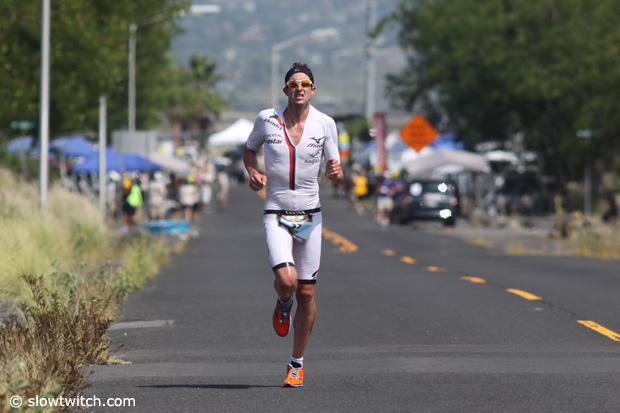Tales of the Missing at Kona
Kona has the best pro field in Ironman racing and places on the start line are highly coveted for the prestige, potential prize money, sponsor bonuses and the thrills of making a mark on history at triathlon’s sacred stadia – Kailua Bay, The Queen K and Ali’i Drive.
Yet this year and every year since the beginning of Ironman on the Big Island in 1981, some people who have the chops to contend and, since qualifying became a high stakes enterprise, earned the points to start, choose not to play. There is a raft of reasons why.
Some people discover after years of trying that are physiologically not meant for Kona. Some people have such bad luck they finally decide they have had enough heartbreak. Some keep trying against all odds to solve seemingly insurmountable physical issues. Some succeed. Some surrender.
Here are a few athletes, current and past, who faced the decision whether to fight against the odds – or stay away – on triathlon’s biggest day. Surprisingly, it’s hard to find any of these folks who have simply decided to walk away.
Part One: Missing in action this year
BACK PROBLEM
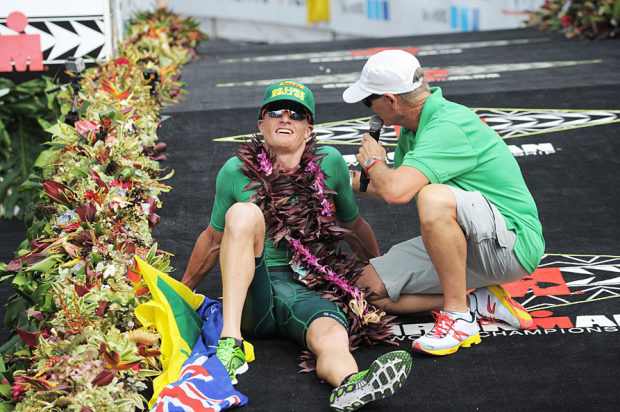
Luke McKenzie is 36 and Kona was his dream from his first days as a triathlete. From 2009 through 2011, he won six Ironman titles. When he scored a second place finish at Kona in 2013, after pursuing that dream for his seven years as a pro, he received a huge confidence boost that he could do more.
In 2015 he scored a win at Ironman Cairns and posted the fastest time ever on Australian soil at Ironman Western Australia – 7:55:57 – and followed with a 6th place at Ironman Cairns in 2016. But through all this he had tough times at Kona. In 2014 he was 15th, in 2015 he DNF’d and in 2016 he was in contention through the bike but faded to 36th on the run.
Early this year he failed to finish at Challenge Wanaka and decided to take stock of his life. While struggling with triathlon, he had great success as the race director at the Island House Triathlon and he and wife Beth founded the WYN Republic sports apparel company.
“Having business commitments and opportunities, a family, living on two continents [Australia and North America] and a triathlon career is definitely a lot to juggle. As I raced Challenge Wanaka I already felt I wanted to do something different this year. I was over committed, tired, fatigued.”
And, he adds, “I was neglecting ongoing issues with Ankylosing Spondylitis,” a chronic type of arthritis that causes inflammation, pain and stiffness in the spine and the joints located just above the tailbone. Which helps to explain his oft disappointing decline in results.
McKenzie says, “I needed to step back and address that illness if I wanted to continue to have a successful triathlon career. So, in March I sat down with my wife and decided that it would be wise to not pursue Kona. After all, I have been competing at Kona since 2006 and at some stage something has got to give.”
The choice was a wise one, as his businesses, his family and his health improved. Last month he won Ironman Wisconsin in race record time, closing with a 2:49:00 marathon.
This year he and Beth have been in Kona promoting WYN Republic and will be leading some bike tours leading up to the race.
While he is missing Kona for the first time in a decade, McKenzie has reason for optimism. “I made the choice to not pursue Kona back in March so I have had a while to accept I am not racing. I actually enjoyed preparing for a different Ironman other than Kona over the summer. And getting the win in Wisconsin set me up well for Kona qualifying in 2018.”
THE DOCTOR WAS ON CALL
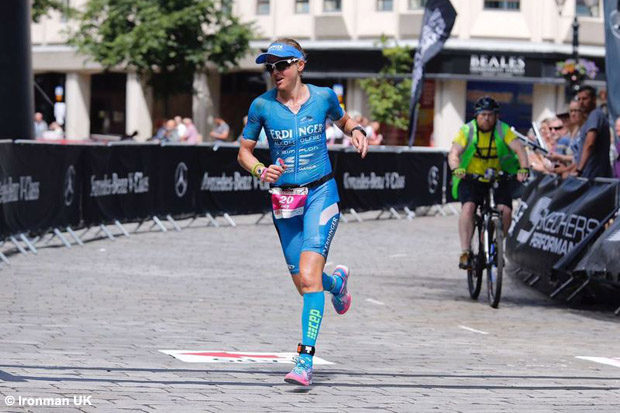
Lucy Gossage of Great Britain ranked 8th on the 2017 Women’s KPR standings and won Ironman Wales, Ironman UK and Ironman Emilia Romagna this year. She also finished 10th at Kona in 2015 and 9th in 2016.
At 37, she says she is not fed up with the Ironman World Championship but life stress ruled out a date with Kona this year.
“I made the positive choice not to go back to Kona,” she said. “This year I have been working around 30 hours a week as a cancer doctor and would just have to use too much annual leave to justify the trip. I think for me it was mainly that, with work, I didn’t have the time to make a 3-week trip to the other side of the world. I’ve got 2 top 10s there and I’m happy with that for the time being.”
Gossage, who has won 9 career Ironman distance races, says recent victories will reduce any pangs of regret to be on the sideline. “I don’t think I’ll know how I feel about missing Kona until race day. I’ve had a fantastic end to the season with 2 Ironman wins in 13 days. So I think that will make watching it much easier. I’m sure I’ll have some ‘I wish I was there’ moments. But right now I’m 100% happy with my decision.”
Gossage will not miss Kona’s heat and humidity. “I definitely don’t enjoy racing in the extreme heat of Kona. I think everyone can train themselves to race well in temperatures up to around 30’C. But above that, some athletes seem to have a physiological advantage. My best performances have always been in cooler conditions.”
Gossage says that Kona conditions explain the difference between her 9 Ironman wins at other venues and her two just barely top 10 finishes at Kona. “You can say ‘only’ a 9th and 10th at Kona,’” she says. “But I was pretty pleased with these! My 9th place last year was 8 weeks after breaking my collarbone. Most people wouldn’t have made the start line, let alone finished in the top 10! But realistically, Kona is actually my worst kind of race. Non-wetsuit swim. Non-technical bike with pace lines. And a run in an oven. You couldn’t design a worse course for me!”
HIS KONA CURSE
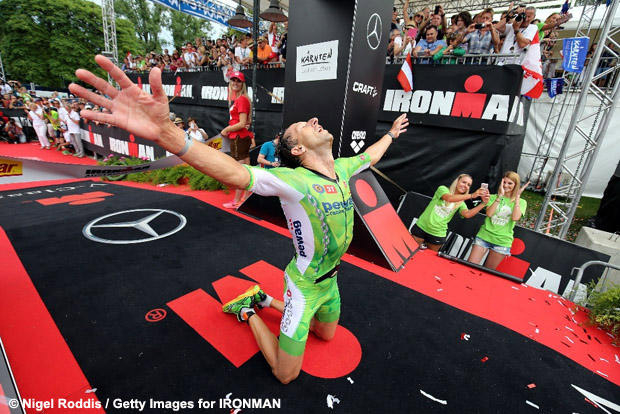
It would be hard to find anyone in recent memory who brought more talent to the table and had more heartbreak at Kona than Marino Vanhoenacker. The man who has won 16 Ironman titles and held the Ironman record time of 7:45:49 at 2011 Ironman Austria seemed a sure shot for Kona victory after a 6th in 2006, 5th in 2007 and 3rd in 2010. In 2012 he surged to a 10-minute lead after the bike and held it for 12 miles on the run until he fell behind on hydration and DNF’d due to heat exhaustion. In 2013 Vanhoenacker did not start at Kona due to a stress fracture of the pubic bone. In 2014, he started at Kona with wishful thinking but lost a battle with a cracked sacrum and ended up walking the last 12 miles.
Afterwards, he issued an emotional cry from the heart: “There is only one reason that made me walk those last 12km's to the finish today: So that I never have to come back. I have invested too much and too long in this race and I can NOT and will NOT do that to myself and my family again. My girls always supported my choices 100% and I have a lot to thank to them and they would be behind me if I wanted to try again but I just cannot do this AGAIN. I'm empty!”
Illustrating Kona’s siren call, Vanhoenacker was lured back in 2015 by outstanding early season performances. But Vanhoenacker could only manage a 4th-best 4:27:26 bike split before quitting the race.
However belatedly, Vanhoenacker kept his vow to quit Kona in 2016. This year he was 33rd in the KPR rankings and recently won Ironman Mont Tremblant by 20 minutes. But at age 41, Vanhoenacker seems to have shaken his Kona addiction. A great competitor in the heat, the reason was never a battle with conditions. It was just his own private Kona curse.
KONA DNFs EXACTED A TEMPORARY TOLL
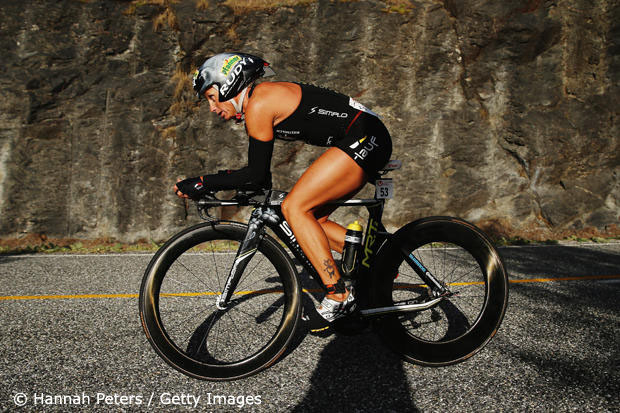
Yvonne Van Vlerken should be a sure thing to race at Kona, given her record-setting 14 sub 9-hour performances at Ironman-distance events, her one-time women’s Ironman distance World-best of 8:45:48 at 2008 Quelle Challenge Roth and her 2nd, 4th and 7th at Kona. Not to forget her excellent record in 2017 with wins at Challenge Wanaka, Challenge Almere and Ironman Barcelona. Never one to struggle with Ironman qualifying, she ranked 56th on the women's KPR ratings this year despite racing mostly non-points accumulating Challenge events. So why was she missing Kona?
“I decided straight after my DNF last year that I wasn’t going to race Kona in 2017,” said Van Vlerken. “In 2016, I dedicated a big portion off the 2nd half of the season to the WC as it should be as this race deserves that, and it was a huge disappointment. Yes I could have qualified but I didn’t need to as I wasn’t going to race. I have never had a single look at the KPR and you are the first one to mention it to me, for me it shows me how I have blanked out Kona this year.”
For all her success, Van Vlerken has had bittersweet memories of Kona. “I have a huge bubble of mixed feelings, sports wise and personal wise,” she says. “I’m sad to say I have more bad memories than good ones on this magical island. I’ve been hurt personally outside of the sport here and I can’t let these bad scars disappear that easily, they will always be there which has a reflection on my emotions and feelings towards the island. I’m at peace with all what happened there, but the island will never be as beautiful as it was when I first came there.”
Van Vlerken recalls her worst moment at Kona in 2009. “My DNFs [2011, 2014, 2016] were all frustrating. But my worst Kona experience was in 2009. After finishing 2nd the previous year with the fastest bike time, somebody tampered with my bike in transition and my gears were all over the place. Eyewitnesses all described a similar person, but we never found out who did it. I cried for a full week. I had focused on this race for an entire year and made huge sacrifices to be the best I could be in Kona.”
Whatever pangs of regret Van Vlerken may have had at missing Kona this year were assuaged when Van Vlerken and long-time boyfriend Per Bittner got engaged last week.
AGE IS JUST A NUMBER TO BROWNIE

Cameron Brown could be excused if he felt he had enough of Kona. After all, he is 44 years old, he has two 2nd place finishes and two 3rd place finishes at Kona and a record 12 wins at Ironman New Zealand. By contrast, Mark Allen retired from Kona after his sixth victory at age 37.
Brown will be at Kona watching a friend and sponsor race. “It will be different watching from the sidelines. this year,” he says. But the pangs won’t be so bad. Brown likely would have given up and retired if he was no longer competitive. But when he finished 2nd at Ironman New Zealand in March, he saw the way forward.
“Kona in 2017 wasn't really on the agenda, I've been to the Big Island since 2000 and raced around 14 times, some great races and some bad ones! I had a great race in Taupo with a 2nd place and if I had a better race at the Asia-Pacific champs in Cairns in June I probably would have qualified but had a very average day. So it just didn't happen this year and I wasn't going to chase points around the globe and be a complete wreck in Kona if I did qualify.”
But this setback does not augur surrender. Quite the opposite!
“It's nice to know I'm still getting better as I get older,” said Brown. “My 2:42 hour marathon at Taupo this year [Brown’s best-ever] was great to do and gave me a lot of confidence that everything is still there! I have Ironman Western Australia in 8 weeks’ time and I would love to have a great race there. I'm aiming to try and go under 8 hours there as an old bastard. I got so close in 2012 with an 8:00:12 in Melbourne and it still pisses me off – I didn't know I could have gone under as I backed it off in the last few kilometers knowing I had 2nd in the bag. If things go well next year then you may see me back as a young 46-year-old racing pro, who knows? Hopefully my body will hold together for a few more years as I still love training and racing.”
Brown respects the Kona heat, but it does not daunt him. He says that heat made him the champion he is and gives him belief his best races are ahead. “I still find it hard to believe I did so well racing in Kona, the heat is incredible and it was bloody hard,” said Brown. “My Kona experiences shaped me as an athlete and made me harder, most races felt easier after racing in Hawaii! It's bloody brutal out there when the wind really blows and the sun comes out on the run.”
Part 2 — Fighting the Big Heat
While Kona heat can throw even the best athletes off their game and discourage them into abandoning the chase for the Ironman Holy Grail, it also lures some stubborn individuals to persist past the point of reason.

Arguably the best triathlon performance against a genetically terrible heat adaptation was Scott Molina’s 1988 Ironman Hawaii victory on one of the hottest days ever in Kona.
In 1981, Molina took on the Ironman in black bike shorts and black wool knee socks. With Olympic distance-winning triathlon speed, several marathons and 50-mile trail run to his credit, Molina was trained for the distance, but not the heat. His brutal cramps at the 17-mile mark left him taken to the medical tent by ambulance. In October ’82, he cramped badly and limped to fourth. In ’83, he was overtrained, dehydrated and did not finish.
Molina then swore off Hawaii for several years. Still, he was intrigued enough to analyze and solve his problem. “I knew I always sweated a lot, so I did a simple test with a scale and found I sweated about 3 liters an hour,” said Molina. “Because I was in good shape, I lost a relatively small percentage of salt and electrolytes for short distances or in cooler weather.”
Still, he wanted one more shot. In 1988, Molina and wife-to-be Erin Baker decided heat acclimatization was the answer. Before the race, they went to Palm Springs, California, for an epic 12-day session. “It was at least 105 degrees, and we averaged 100 miles on the bike a day. Then I ran 13 miles or 10km on alternating days,” recalled Molina.
Molina also experimented with salt and electrolytes. The best results came with what amounted to salt depleting followed by salt loading. “That way we held our water the best,” said Molina.
The week before the race, Molina tried to go without salt altogether – depletion phase. On race day, he loaded up two bottles of thick banana Gatorlode mixed with one gram of salt apiece and took in salt by drinking eight electrolyte drinks along the course. With Mark Allen beset with bike problems, Molina led took the lead with 40 miles left on the bike leg. “As I got off the bike, I wasn’t cramping, which was unusually good, but my stomach felt terrible from all that salt and I would have loved to have quit,” recalled Molina.
“Unfortunately, I was leading.”
Desperate to avoid the cramps that had always doomed him, Molina carried two water bottles on an Army surplus belt loaded with banana Gatorlode and a heavy dose of salt and he maintained a 2 minute lead through Mile 20 at 6:45 pace.
“Then I thought I could cramp or keel over at any moment and my pace dropped to 7:30 a mile,” said Molina. “But thankfully, a 3:01 marathon was enough to hold off Mike Pigg on the day."
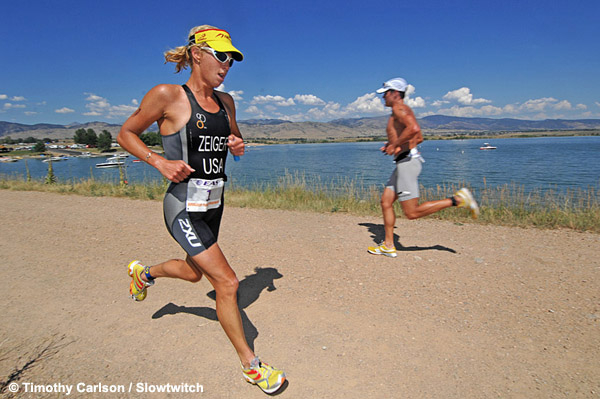
Joanna Zeiger, who finished 4th at the 2000 Olympics and won the 2008 Ironman 70.3 World title, fought long and hard to fulfill her Kona dream, but ultimately surrendered to the inevitable. From 1998 through 2000, she finished 6th, 6th and 5th at Kona but then hit the wall.
“My last good race in Kona was in 2000,” said Zeiger. After that race, a series of misadventures derailed my Kona racing. I had several bouts of severe dehydration, one year I sustained a concussion, and one year I tried unsuccessfully to race with a torn hamstring. My swan song was in 2007 when I walked much of the marathon struggling with dehydration and stomach issues which caused vomiting and many trips to the porta-potties.
In 2008, after I won 70.3 Worlds, I made one more attempt at Ironman. At Arizona I had a large lead off the bike, but my stomach didn’t cooperate once again, and I was forced to drop out with dizziness and stomach distress. I decided that physiologically, I just couldn’t do Ironman anymore.”
Did she suffer any second thoughts? “No! Once I took an honest look at how Kona treated me on the race course, there really wasn’t even a decision to be made. Even on my best days in Kona, the race was a massive struggle for me physiologically; I always was fighting the battle with dehydration and stomach issues.”
Was her problem mainly with the heat? “I raced well in the heat until I didn’t race well in the heat. I think I had too many instances of heat related illness from going so hard in hot races both long course and short course. Over time, my body couldn’t manage the heat as well. So much is at stake to race Kona that athletes turn themselves inside out to get there only realize the course is just not for them.”
Part 3: Should Ironman rotate the venues of the Ironman World Championship?
Do some people stay away from Kona because of the heat? Would some people win the Ironman World Championship if were in cold weather? Who thinks Kona is not a true World Championship?
“From a personal point of view I’d love if they put the world champs in a cold, hilly Wales and I don’t think many people would bet against me doing pretty well!” said Lucy Gossage. “I do agree that Kona is a race that suits a certain type of triathlete (not me) and in many ways I always resented the fact that the world champs is always held there. But having said that Kona is a unique venue for a world champs and racing there is certainly a different experience.”
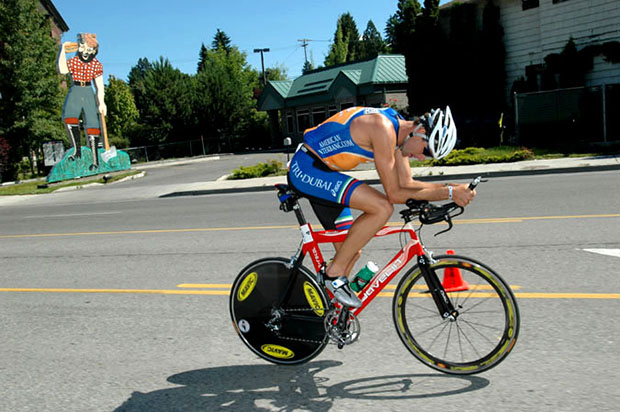
“A race like Hawaii certainly caters more to a specific type of athlete,” says Simon Lessing, who pulled out with back troubles on the bike in his one big try at Kona in 2004. “Not all athletes race well in the cold. Not all athletes race well in the heat and humidity. To a point you can learn how to deal with it. But it takes time. That worked against me because I was nearing the end of my career. I think this plan would definitely be fairer. And we are not only talking about pros, but also age groupers. I am in the coaching business now. Many athletes who have unbelievable potential go there and it is a disaster. It is not because of their athletic ability, work ethic, commitment, etcetera. I would say that for pros and age groupers alike it is a similar scenario.”
Yvonne Van Vlerken has no complaints about Kona’s heat and humidity. On her best days, she had a 2nd, a 4th and a 7th at Kona. She sees some benefit to such a change – but doesn’t hold any hope. “Yes, I agree on one side of the issue. I would love to race the Ironman Worlds somewhere else, when possible a bit closer to home. Hawaii is just too far away for us Europeans. I do think athletes from the US have an advantage and it’s great to see the IM 70.3 Worlds rotate venues. On the other side, Kona will always be Kona and something special. The World Championship belongs there and I don’t see that change in the future.”
Joanna Zeiger, the 2000 Olympic 4th place finisher, the 2008 Ironman 70.3 World Champion, who finished 6th twice and 5th once at Kona, had her own troubles with Kona’s heat. But she is no advocate for change. “Kona is an institution,” she says. “Just because it is hard or not for everyone isn’t a good enough reason to move it.”
Luke McKenzie says: “I personally like having Kona as the grand stage of long distance racing. It is an icon of the sport and I think it would be a shame to lose it as our ultimate test.”
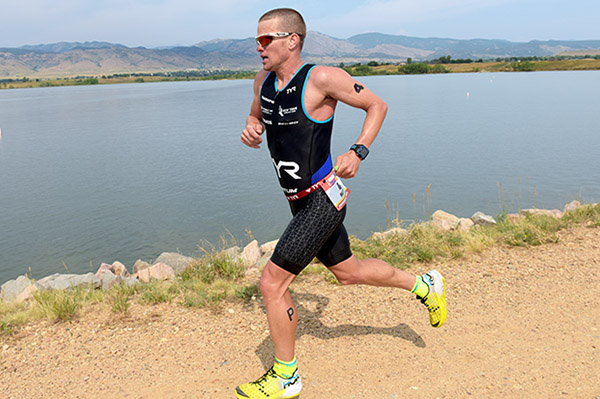
Matt Chrabot, who did not make the points to race Kona this year but is focused on 2018, is in favor of a venue change but is opposed to choosing a cooler course. “Venue change? Sure. But I totally disagree on finding a cooler course. First of all, the Ironman World Championships should be a hard swim, bike, and run. That means a non-wetsuit ocean swim. No buoyancy aide for a World Championship. Marathon swimmers aren’t allowed to race in wetsuits for that reason. Chattanooga 70.3 may have been the first ever 70.3 World Champs with a non-wetsuit swim for pros. Even salt water and waves add to the challenge.”


